Types of Kicks in Soccer: A Comprehensive Guide
Soccer is a game that requires a combination of skills such as dribbling, passing, and shooting. One of the most important skills that a soccer player must master is the art of kicking the ball. There are various types of kicks in soccer, each with its own unique purpose and technique.
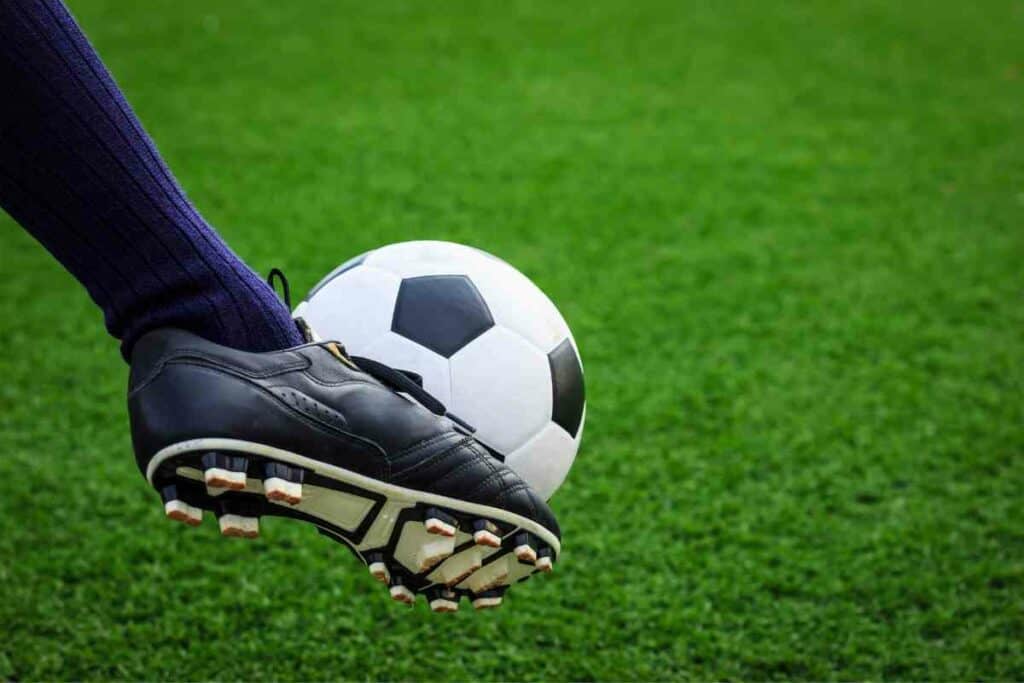
Related Article! Most Common Soccer Terms!
What are the different types of kicks in soccer?
In soccer, players utilize various kicks, including free kicks, penalty kicks, goal kicks, and corner kicks. They also employ advanced techniques like the instep, laces, push, back heel, outside of the foot, toe, bicycle, volley, power shot, half volley, rabona, scissor, and outside kicks. Mastery of these kicks enhances a player’s effectiveness on the field.
The different types of kicks in soccer range from basic to advanced, and mastering them can take years of practice. Some kicks are used to pass the ball to a teammate, while others are used to score goals. Understanding the different types of kicks in soccer can help players improve their game and become more versatile on the field. In this article, we will explore the various types of kicks in soccer and provide tips on how to execute them properly.
Fundamentals of Kicking in Soccer
When it comes to soccer, kicking is one of the most fundamental skills that every player must master. Whether it’s a simple pass to a teammate or a powerful shot on goal, the ability to kick the ball with precision and accuracy can make a significant difference in the outcome of a game. In this section, we’ll explore the key elements of kicking in soccer, including the importance of balance and control, understanding power and accuracy, and the role of the non-kicking leg and torso.
Importance of Balance and Control
One of the most critical aspects of kicking in soccer is maintaining balance and control. A player must be able to keep their body stable and centered while making contact with the ball. This requires proper footwork and body positioning, as well as a strong core and leg muscles to maintain balance. Without proper balance and control, a player’s kicks may lack accuracy and power, leading to missed opportunities on the field.
Understanding Power and Accuracy
Another critical element of kicking in soccer is understanding the relationship between power and accuracy. While a powerful kick can be impressive, it’s often less effective than a well-placed, accurate shot. Players must learn to balance power and accuracy to achieve the optimal outcome. This requires proper technique and foot placement, as well as an understanding of how to use the laces of the shoe to achieve the desired effect.
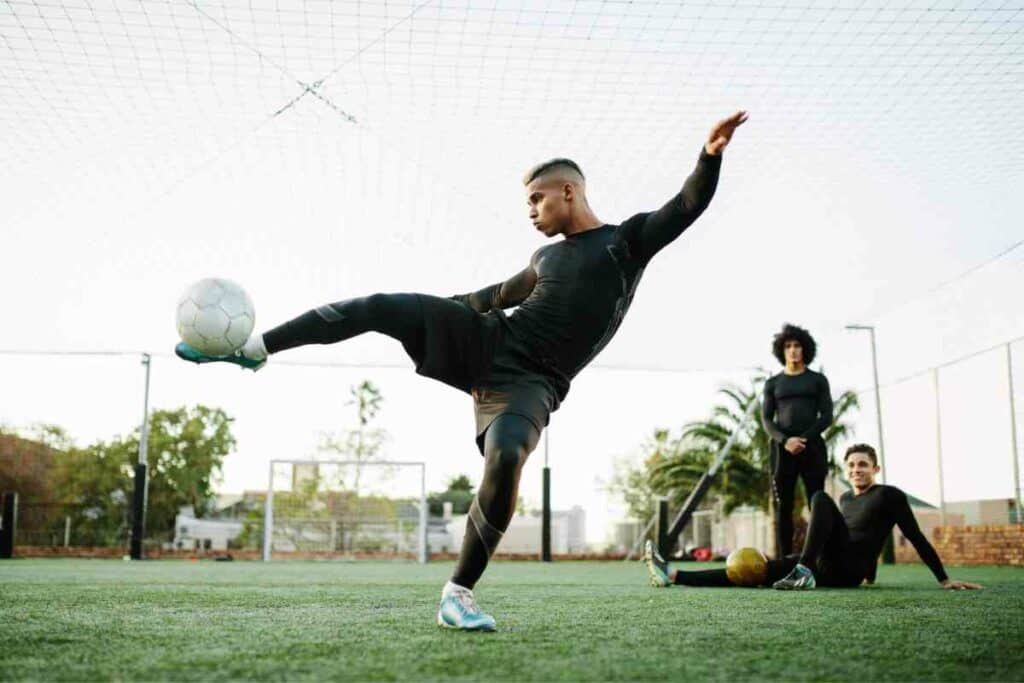
Role of Non-Kicking Leg and Torso
Finally, the non-kicking leg and torso play a crucial role in the execution of a successful kick. The non-kicking leg provides stability and balance, while the torso helps generate power and direction. Proper positioning and movement of these body parts can significantly impact the outcome of a kick, making it essential for players to focus on their overall body mechanics when practicing their kicking skills.
In summary, kicking is a fundamental skill in soccer that requires balance, control, power, and accuracy. With proper technique, footwork, and body positioning, players can master the different types of kicks and become more effective on the field.
Different Types of Kicks
In soccer, there are a variety of kicks that players can use to pass, shoot, and score goals. Each kick has its own unique technique and purpose. Here are some of the most common types of kicks in soccer:
Instep Kick
The instep kick, also known as the drive or power shot, is a powerful and accurate kick that is used for shooting on goal or making long passes. To perform the instep kick, the player strikes the ball with the laces of their shoe, using their dominant foot and following through with their kicking leg.
Laces Kick
The laces kick is similar to the instep kick, but it is used for shorter passes and shots. To perform the laces kick, the player strikes the ball with the top part of their foot, just below the laces.
Push Kick
The push kick, also known as the inside-of-the-foot pass, is a basic and essential pass in soccer. It is used for short and accurate passes to teammates. To perform the push kick, the player uses the inside of their dominant foot to push the ball forward.
Back Heel Kick
The back heel kick is a flashy and unpredictable kick that can be used to surprise opponents. To perform the back heel kick, the player kicks the ball with the heel of their foot, using a quick flick of the ankle.
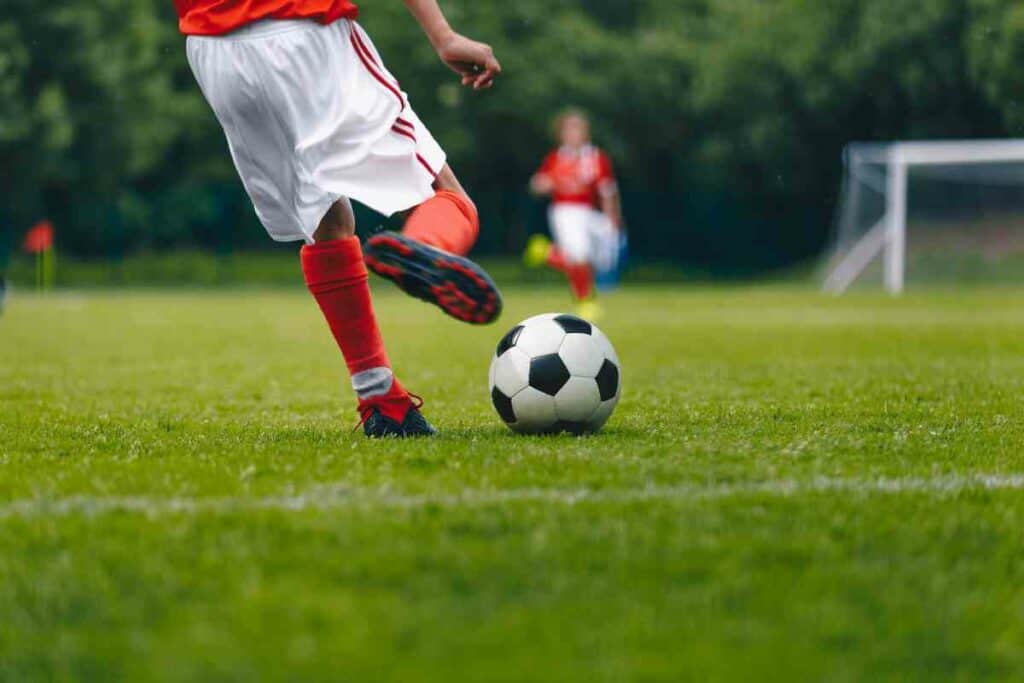
Outside of the Foot Kick
The outside of the foot kick, also known as the sidefoot pass, is a precise and versatile pass that can be used for short and long distances. To perform the outside of the foot kick, the player uses the outside of their foot to strike the ball.
Toe Kick
The toe kick, also known as the toe poke, is a quick and unexpected kick that can be used to shoot or pass the ball. To perform the toe kick, the player uses the tip of their shoe to poke the ball.
Bicycle Kick
The bicycle kick, also known as the scissor kick, is a spectacular and difficult kick that is used to shoot or clear the ball. To perform the bicycle kick, the player jumps and kicks the ball with both feet, while in mid-air.
Volley
The volley is a powerful and impressive kick that is used to shoot or pass the ball without letting it touch the ground. To perform the volley, the player strikes the ball in mid-air, using the instep or laces of their foot.
Power Shot
The power shot is a strong and accurate kick that is used to shoot the ball with force and speed. To perform the power shot, the player strikes the ball with the laces of their foot, using a full swing of their kicking leg.
Half Volley
The half volley is a challenging and precise kick that is used to shoot or pass the ball after it bounces off the ground. To perform the half volley, the player strikes the ball just as it bounces up from the ground, using the instep or laces of their foot.
Rabona
The rabona is a creative and unpredictable kick that is used to shoot or pass the ball with style. To perform the rabona, the player wraps their non-dominant leg around their dominant leg, and kicks the ball with the laces of their dominant foot.
Scissor Kick
The scissor kick is a dramatic and acrobatic kick that is used to shoot or clear the ball. To perform the scissor kick, the player jumps and kicks the ball with one leg, while the other leg swings in the opposite direction.
Outside Kick
The outside kick, also known as the outside-of-the-boot pass, is a tricky and deceptive pass that can be used to surprise opponents. To perform the outside kick, the player uses the outside of their foot to curve the ball around defenders.
Overall, mastering these different types of kicks can greatly improve a player’s skills and effectiveness on the field
Kicks Used in Game Situations

When it comes to soccer, there are various types of kicks that players can use to achieve their objectives. In this section, we will discuss various types of kicks that are used in different game situations.
Free Kicks
Free kicks are awarded to a team when an opposing player commits a foul. Free kicks can be either direct or indirect. A direct free-kick is awarded when a player commits a careless, reckless, or excessive force foul. On the other hand, an indirect free-kick is awarded when a player commits a non-contact foul like impeding an opponent or playing in a dangerous manner.
During a free-kick, the opposing team must be at least 10 yards away from the ball. The attacking team can use this situation to either shoot directly at the goal or pass the ball to a teammate. It requires precision and finesse to execute a successful free-kick.
Penalty Kicks
A penalty kick is awarded when a defender commits a foul inside their 18-yard box. The attacking team takes the penalty kick from the penalty spot, which is 12 yards away from the goal line. The goalkeeper must remain on the goal line until the ball is kicked.
The penalty kick is a high-pressure situation for both the kicker and the goalkeeper. The kicker must aim for the corners of the goal to score, while the goalkeeper must try to save the shot.
Goal Kicks
A goal kick is awarded to the defending team when the attacking team kicks the ball over the goal line, but not into the goal. During a goal kick, the ball is placed on the 6-yard box, and the opposing team must be outside the penalty area. The defender taking the goal kick can either pass the ball to a teammate or kick the ball long down the field.
Corner Kicks
Corner kicks are awarded to the attacking team when the ball goes out of play over the goal line, but not into the goal, and was last touched by a defender. The attacking team takes the corner kick from the corner of the field nearest to where the ball went out of play.
During a corner kick, the attacking team can either cross the ball into the box or take a short pass. The defending team must try to clear the ball away from their goal.
Indirect Free-Kicks
An indirect free-kick is awarded to a team when a player commits a non-contact foul like impeding an opponent or playing in a dangerous manner. During an indirect free-kick, the ball must touch another player before it can go into the goal. The opposing team must be at least 10 yards away from the ball.
Direct Free-Kicks
A direct free-kick is awarded to a team when a player commits a careless, reckless, or excessive force foul. During a direct free-kick, the attacking team can shoot directly at the goal or pass the ball to a teammate. The opposing team must be at least 10 yards away from the ball.
In conclusion, mastering different types of kicks is crucial for soccer players to succeed in the game. Whether it is a free-kick, penalty kick, goal kick, corner kick, indirect free-kick, or direct free-kick, each kick requires different techniques and precision to execute successfully.
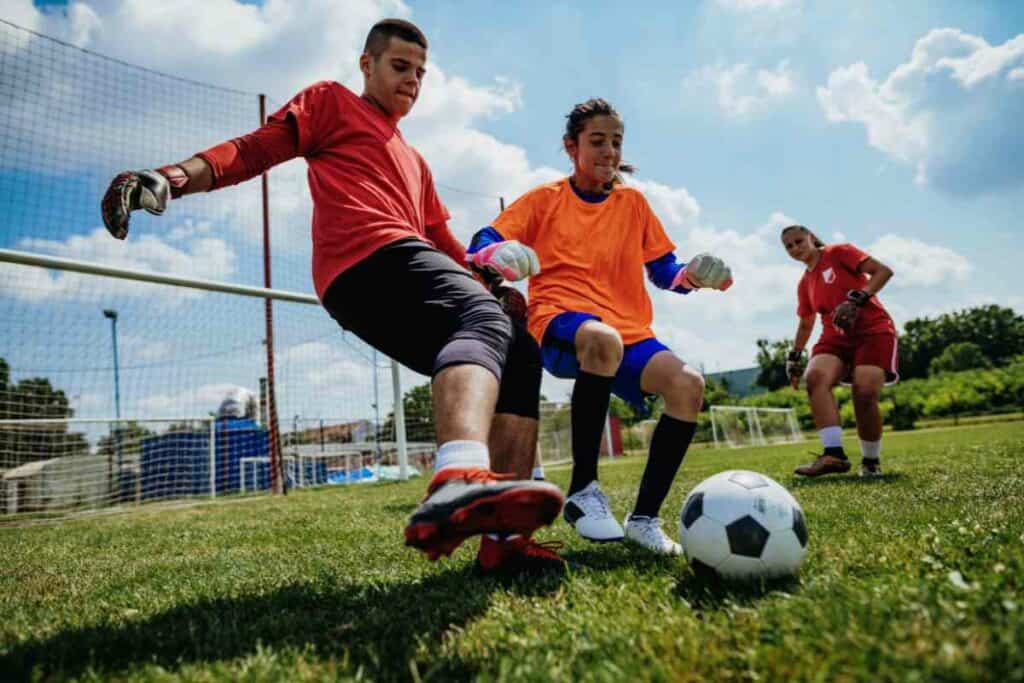
Practice Techniques and Drills
As with any sport, practice is key to mastering soccer kicks. By incorporating specific drills into your training routine, you can improve your accuracy, power, and technique. Here are some drills to practice:
Accuracy and Precision Drills
Target Practice: Set up targets on the field and practice kicking the ball towards them. This drill helps improve your accuracy and precision.
- Cone Weaving: Set up cones in a straight line and weave the ball in and out of them. This drill helps improve your footwork and precision.
- Curve Shot: Practice curving the ball around obstacles or towards a specific target. This drill helps improve your finesse and precision.
Power and Force Drills
- Power Shot: Practice kicking the ball with as much force as possible. This drill helps improve your kicking power.
- Half Volley: Practice kicking the ball out of the air with force. This drill helps improve your timing and power.
- Rabona: Practice kicking the ball with your non-kicking leg wrapped around your kicking leg. This drill helps improve your power and technique.
Passing and Control Drills
- Short Pass: Practice passing the ball to a teammate over short distances. This drill helps improve your passing accuracy and control.
- Long-Distance Pass: Practice passing the ball to a teammate over long distances. This drill helps improve your passing power and accuracy.
- Golf Putter: Practice tapping the ball with the outside of your foot. This drill helps improve your control and finesse.
Advanced Kicking Techniques Drills
- Toe Kick: Practice kicking the ball with the tip of your toe. This drill helps improve your technique and precision.
- Bicycle Kick: Practice kicking the ball while in mid-air with your back to the goal. This drill helps improve your technique and precision.
- Scissor Kick: Practice kicking the ball while jumping and bringing your legs together in a scissor-like motion. This drill helps improve your technique and precision.
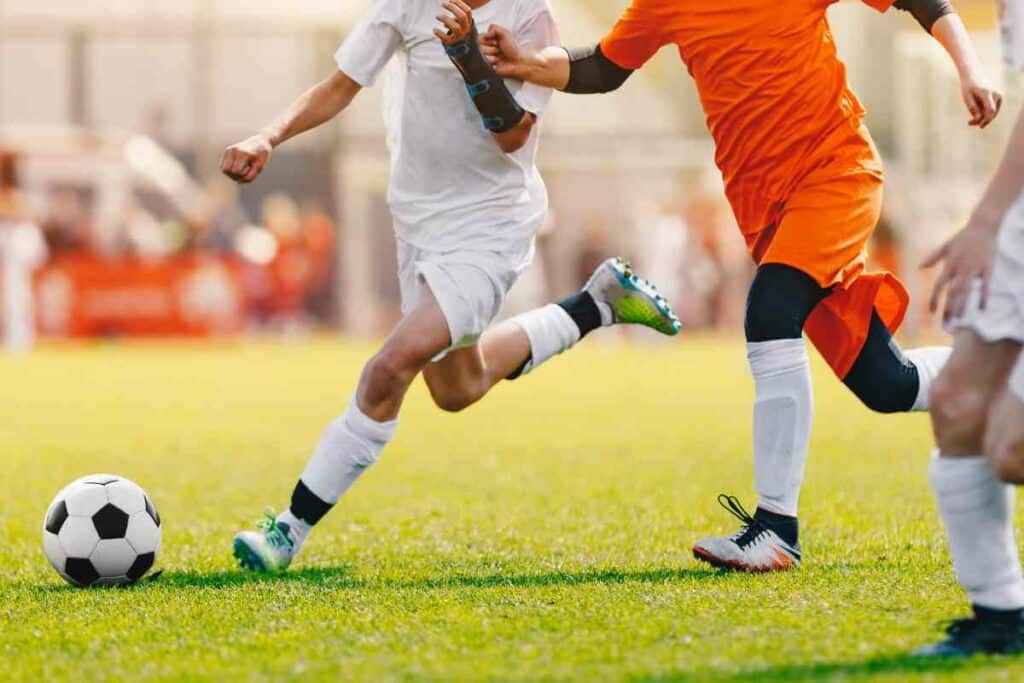
Remember to maintain proper balance and form while practicing these drills. Keep your torso leaning slightly forward and your non-kicking leg pointed towards your target. And always follow the rules of the game, including using the center of the ball for accuracy and the laces kick for power. With consistent practice and dedication, you can become a master of soccer kicks.
Frequently Asked Questions
What are the different types of kicks used in soccer?
Soccer players use various types of kicks to perform different actions on the field. Some of the most common types of kicks are push kick, laces kick, instep kick, heel kick, and lob kick. Each kick has its unique technique and is used to solve specific game situations.
What is a push kick in soccer?
The push kick is the most fundamental type of kick in soccer. It is an easy technique that even beginner players can learn with practice. To perform a push kick, the player uses the inside surface of the foot and pushes the ball forward. This kick is used to pass the ball to a teammate or move the ball forward.
What is a laces kick in soccer?
The laces kick, also known as a power shot, is one of the most powerful kicks in soccer. To perform a laces kick, the player uses the top of the foot and strikes the ball with force. This kick is used to take a shot on goal or clear the ball out of the defensive zone.
How do you perform an instep kick in soccer?
The instep kick, also known as a drive or curl kick, is used to create a spin on the ball. To perform an instep kick, the player uses the laces of the foot and strikes the ball with the inside surface of the foot. This kick is used to take a shot on goal or pass the ball with accuracy.
What are some exercises to improve soccer kicks?
To improve soccer kicks, players can practice drills such as shooting at targets, passing and receiving drills, and dribbling exercises. They can also work on their technique by practicing each type of kick separately.
Are there any other martial arts kicks that can be used in soccer?
While soccer players primarily use traditional soccer kicks, some martial arts kicks can also be used in soccer. For example, the sidekick can be used to clear the ball out of the defensive zone, and the roundhouse kick can be used to take a shot on goal. However, these kicks require advanced skill and should only be attempted by experienced players.
